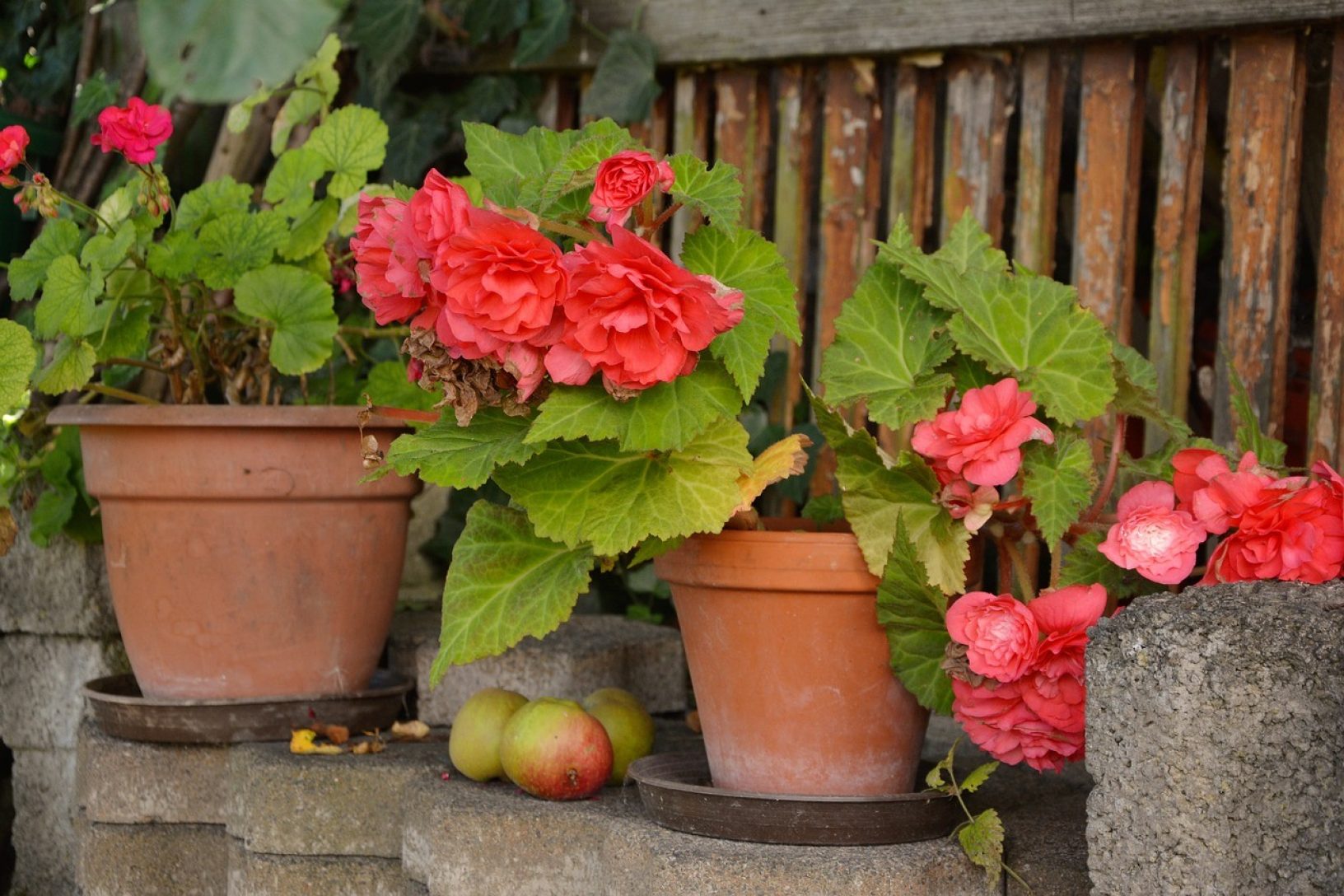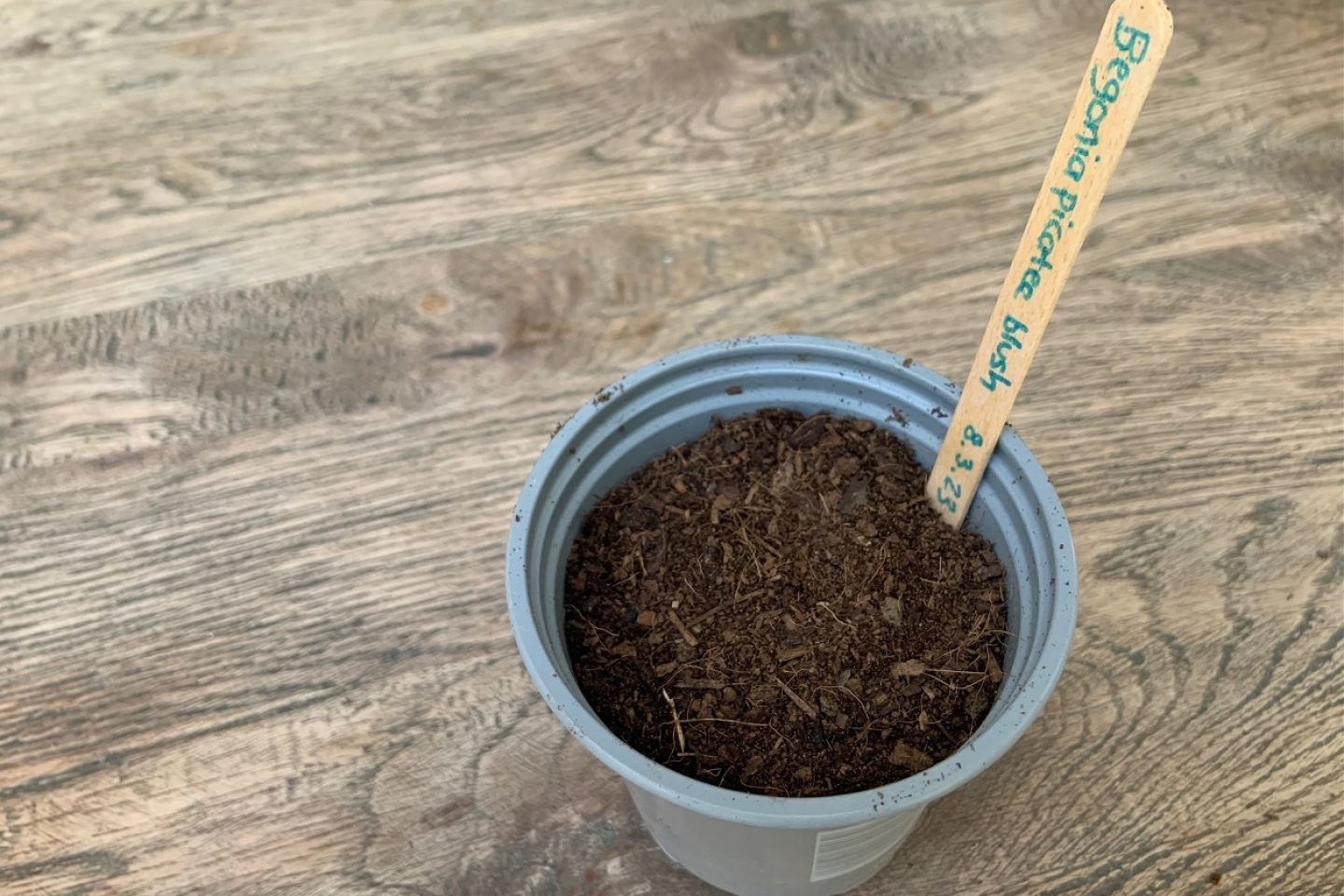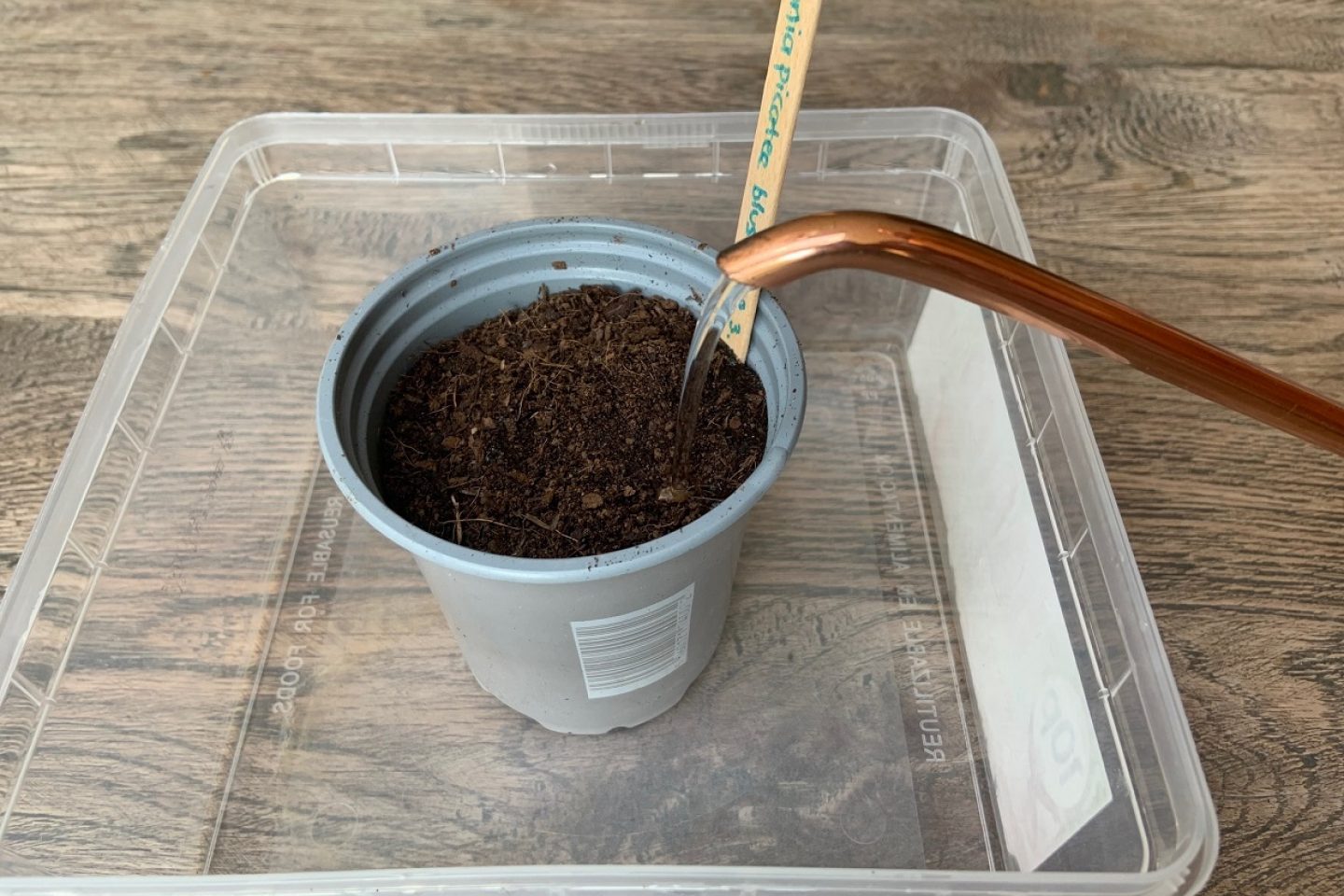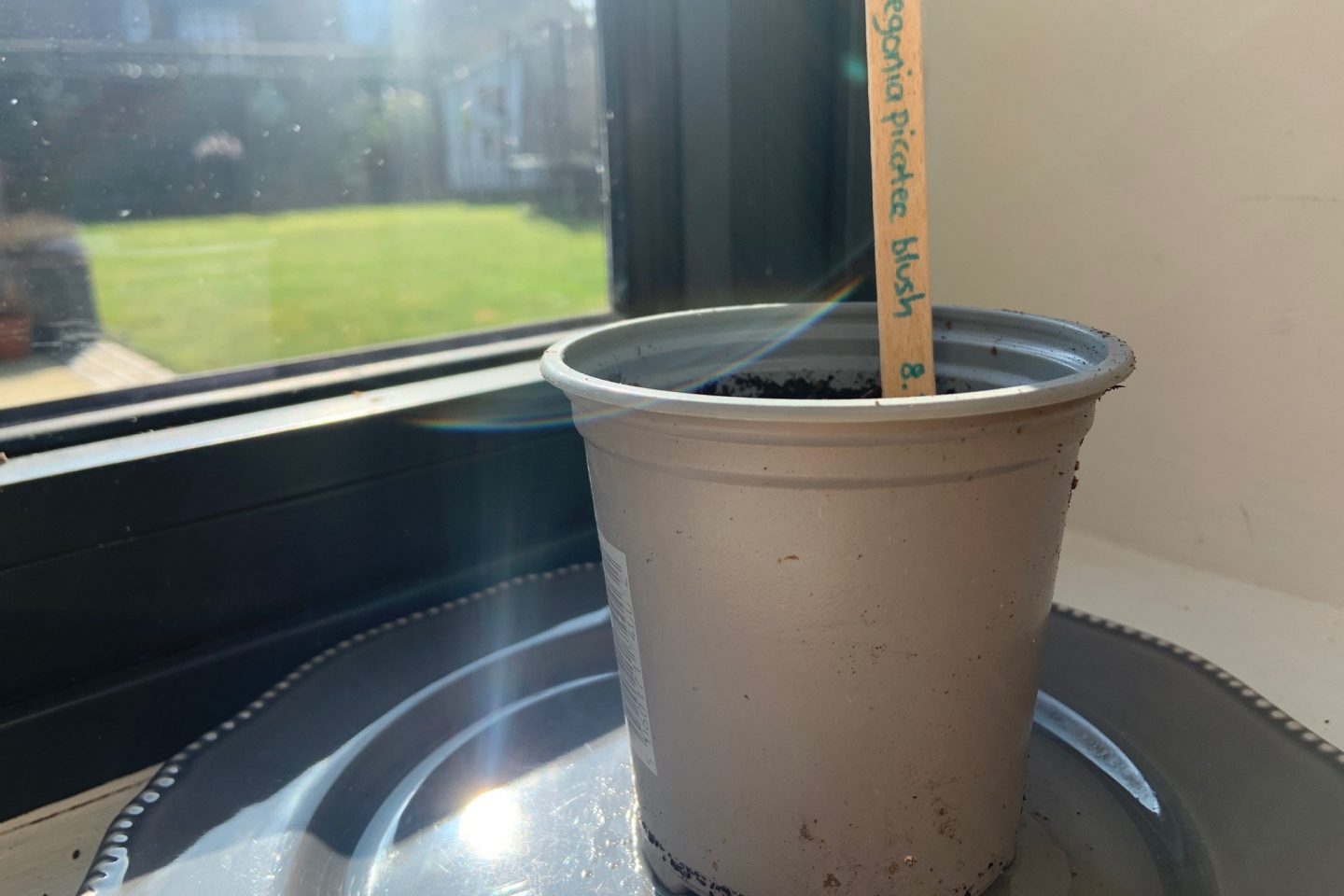Helpful information
Timing: March-April (sowing tubers indoors), May (moving / planting outside), July-October (flowers)
Where to do it: Indoors (starting), Outdoors (final position)
Garden space: Large garden, small garden, balcony

Timing: March-April (sowing tubers indoors), May (moving / planting outside), July-October (flowers)
Where to do it: Indoors (starting), Outdoors (final position)
Garden space: Large garden, small garden, balcony

There are several different types of begonia. Two of the main ones are:
These varieties grow from a tuber. The tuber looks a bit like a mud pie, or small cow pat!
There are lots of varieties of tuberous begonia, including upright or trailing plants. Tuberous begonias are great to grow in containers, pots and hanging baskets.
These types have a fibrous root. They are generally grown as annual bedding plants. This means plants that only last one year and are generally placed in flower beds and borders.
This article is about tuberous begonias.
Buying tuberous begonias
You can usually buy begonia tubers from garden centres or online from mid-winter into late spring.
If you are not planning to plant them soon, store them safely in a light, airy room until needed.
Keep them out of reach of animals, as begonia tubers can be toxic for pets including cats and dogs.
When to plant begonia tubers
You have two options for your tubers:
1. Plant in small pots indoors. You can do this from around February to April. You will need to pot these on and move the plants into the garden once they have grown big enough. You also need the weather outside to be warm enough. This is usually from May onwards.
2. Plant straight into the final spot in the garden. If you do this, wait until there is no more risk of frost. Again, this is usually from May onwards.
Below, you can find a step by step guide for option 1.
Where to place in the garden
Begonias are tropical plants. Tuberous begonias do best in a partly shady spot in the garden, that also gets plenty of light and air.
Essential items
Optional items
Follow these steps to grow tuberous begonias with ease.
Step 1: Gather what you need

Find a comfortable place to work. This activity can be done seated at a table, or standing at a workbench.
Step 2: Part fill the pot with compost

Fill the pot around two thirds full with compost. This will leave room to place and cover your begonia tuber.
Step 3: Put your begonia tuber in place

Put one tuber per small pot on top of the soil.
You want to place it so the hollow side of the tuber is facing up and roots facing down. Begonia tubers tend to have a shape a bit like a small bowl. When you place them on the soil, it's as if you are sitting the bowl on its base.
Step 4: Cover with compost

Put a light layer of compost to cover the tuber. Aim for around 1cm deep.
If you are worried about being heavy handed, use a sieve/colander to sprinkle compost over your tuber.
Step 5: Label your plants

Write the plant name, variety and if space date sown. This will help you know how long it takes to germinate.
Step 6: Gently water

Give your freshly planted tubers a gentle water.
One good way to do this is to sit your pots in a large tray or tub, for example a washing up bowl. Gently add water in. It will run out of the bottom of the pot. Leave the pot in the tub so it can soak up the water. This will probably take an hour or more.
You could use a bottle top waterer in place of a watering can. These are also a good way to reuse plastic bottles.
Step 7: Position your pots

Place your pots in a sunny spot in a room - such as on a windowsill - or in a conservatory or greenhouse.

As your tubers germinate and grow, keep the soil moist but not soggy.
Once they have grown big enough, you can ‘pot them on.’ This means carefully moving them into their final, bigger container, pot or hanging basket.

If you plant tubers straight into large containers or hanging baskets ready for the garden, you avoid having to pot them on. This makes growing begonias a little less effort. You will need to be patient and wait until May when the weather has warmed.
Tuberous begonias will not survive if left outside during winter. You can, however, save and store the tubers then try growing them again the next year.
Once your begonia has finished flowering, allow the stems to die back. Remove all dead foliage from the tuber. Then, carefully take the tuber out of the soil.
Store the tuber in a light, airy frost-free room, conservatory or greenhouse until needed.